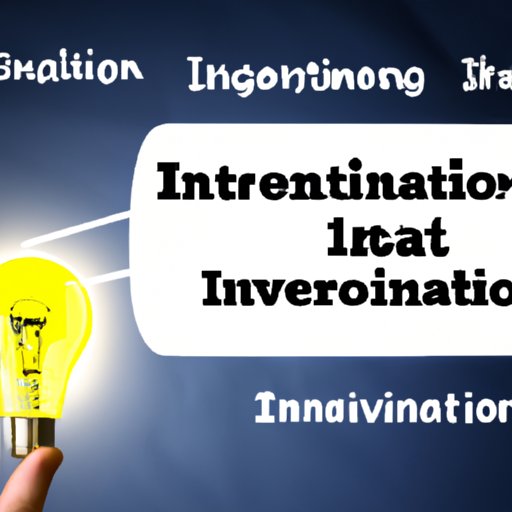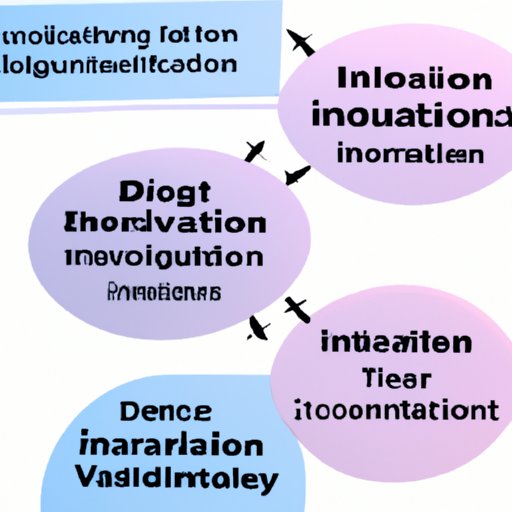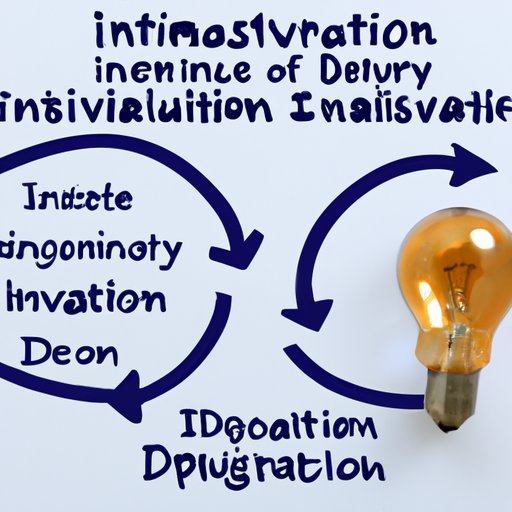Introduction
Incremental innovation is the process of making small but regular improvements to existing products or processes. It is a form of continuous improvement that allows organizations to remain competitive and deliver value to customers. This type of innovation is often overlooked in favor of more radical forms of innovation, such as disruptive or breakthrough innovations. However, incremental innovation can be just as powerful in helping businesses stay ahead of the competition and increase profitability.

Exploring the Benefits of Incremental Innovation
Incremental innovation offers many benefits for businesses, including cost savings, faster time to market, and improved product quality. Cost savings are achieved through the use of existing resources and technology, rather than investing in new ones. This can help businesses reduce overhead costs and optimize operations. Additionally, incremental innovation often leads to faster time to market, as the process is simpler and less disruptive than larger-scale innovation projects.
Incremental innovation also has the potential to improve product quality. By making small changes over time, organizations can ensure that their products are up to date with the latest technologies and trends. This can result in higher customer satisfaction and loyalty, which can lead to increased revenue.
A Guide to Understanding Incremental Innovation
In order to understand what incremental innovation is, it is important to first define the term. Incremental innovation is a process of making small but regular improvements to existing products or services. This can involve changing components, adding features, or improving processes. It is a form of continuous improvement that allows organizations to remain competitive and deliver value to customers.
There are several types of incremental innovation, including functional and structural. Functional innovation involves making minor changes to existing products or services, while structural innovation involves making more substantial changes. Examples of incremental innovation include adding new features to existing products, improving existing processes, and introducing new technologies.

How to Implement Incremental Innovation in Your Business
Implementing incremental innovation in your business requires careful planning and execution. The first step is to identify opportunities for improvement. This can involve conducting research into customer needs and competitor offerings. Once potential areas of improvement have been identified, it is important to analyze your current processes to determine where changes need to be made.
The next step is to establish a culture of continuous improvement within the organization. This involves creating an environment where employees are encouraged to suggest ideas for improvement and take an active role in implementing them. Finally, it is important to measure the success of your efforts to ensure that the changes are having a positive effect on the business.
The Impact of Incremental Innovation on Businesses
Incremental innovation can have a significant impact on businesses. It can lead to increased efficiency by streamlining processes and eliminating waste. It can also make businesses more competitive by allowing them to keep up with the latest trends and technologies. Finally, it can enhance customer satisfaction by providing them with better products and services.

Analyzing the Value of Incremental Innovation
When considering incremental innovation, it is important to consider its value. Measuring the return on investment (ROI) is one way to do this. ROI measures the amount of money that a business earns in relation to the amount of money it invests in a project. For example, if a business invests $1000 in an incremental innovation project and earns $2000 in returns, then the ROI is 100%.
It is also possible to calculate the value of incremental innovation by estimating the cost savings and time savings that it will generate. This includes estimating the cost savings from reduced overhead expenses, as well as the time savings from faster time to market. By calculating the value of incremental innovation, businesses can make informed decisions about whether or not to pursue it.

Examining the Advantages and Disadvantages of Incremental Innovation
When it comes to incremental innovation, there are both advantages and disadvantages. On the plus side, it can offer lower risk, more flexibility, and increased profitability. On the downside, there is a potential for failure, as well as difficulty scaling. Additionally, some businesses may find it difficult to measure the value of incremental innovation.
Debunking Myths About Incremental Innovation
Incremental innovation is often misunderstood or undervalued. There are several common myths about incremental innovation that should be debunked in order to better understand its true potential. One myth is that incremental innovation is not worth the effort. In reality, it can offer numerous benefits, including cost savings, faster time to market, and improved product quality. Another myth is that incremental innovation is too slow. While it may take longer than other forms of innovation, it can still lead to significant improvements in a shorter period of time.
Finally, many people believe that incremental innovation does not lead to breakthroughs. This is not true. While incremental innovation may not lead to disruptive innovations, it can still lead to significant improvements that benefit businesses and customers alike.
Conclusion
Incremental innovation is a powerful tool for businesses to remain competitive and deliver value to customers. It offers numerous benefits, including cost savings, faster time to market, and improved product quality. Additionally, it can lead to increased efficiency, greater competitiveness, and enhanced customer satisfaction. Although there are risks and challenges associated with incremental innovation, these can be managed with careful planning and execution.
(Note: Is this article not meeting your expectations? Do you have knowledge or insights to share? Unlock new opportunities and expand your reach by joining our authors team. Click Registration to join us and share your expertise with our readers.)
